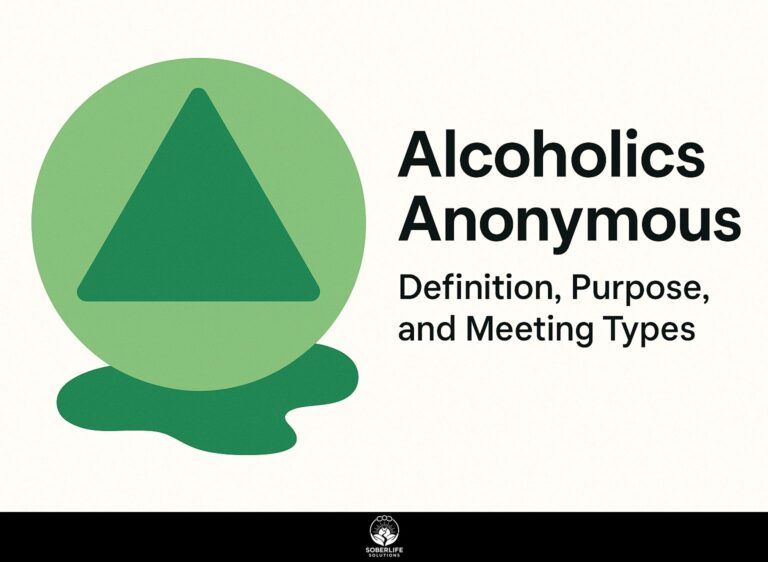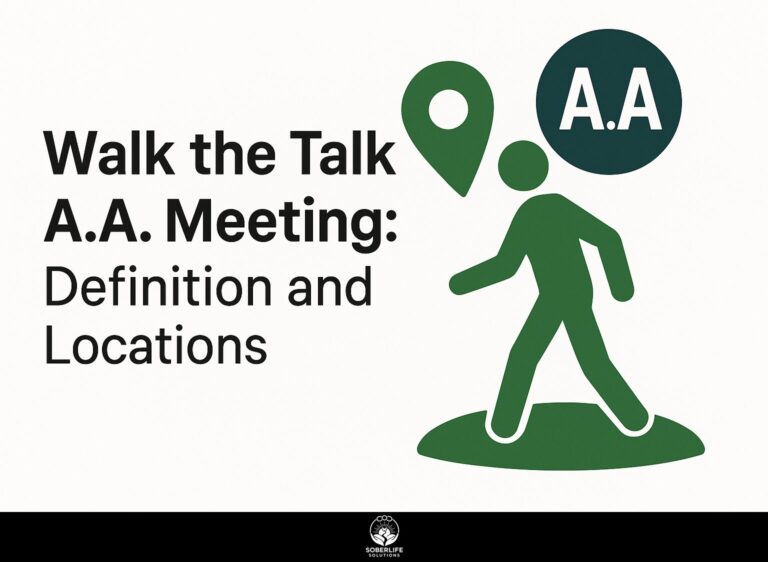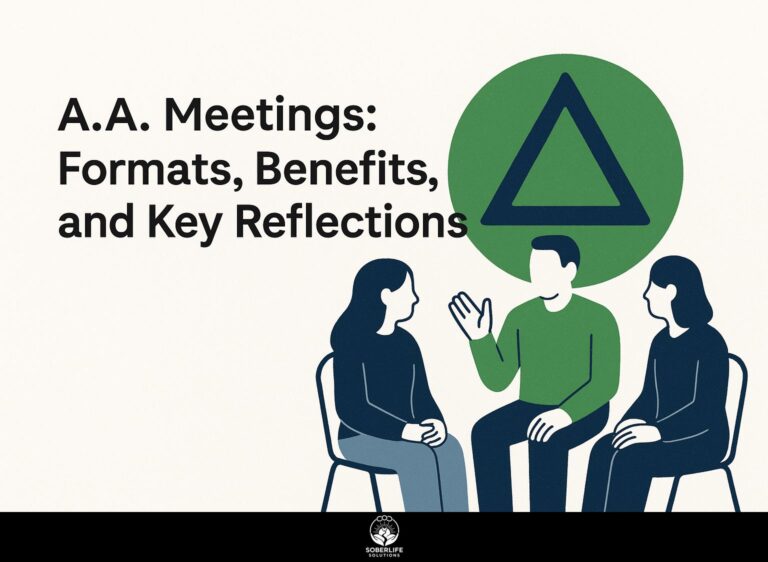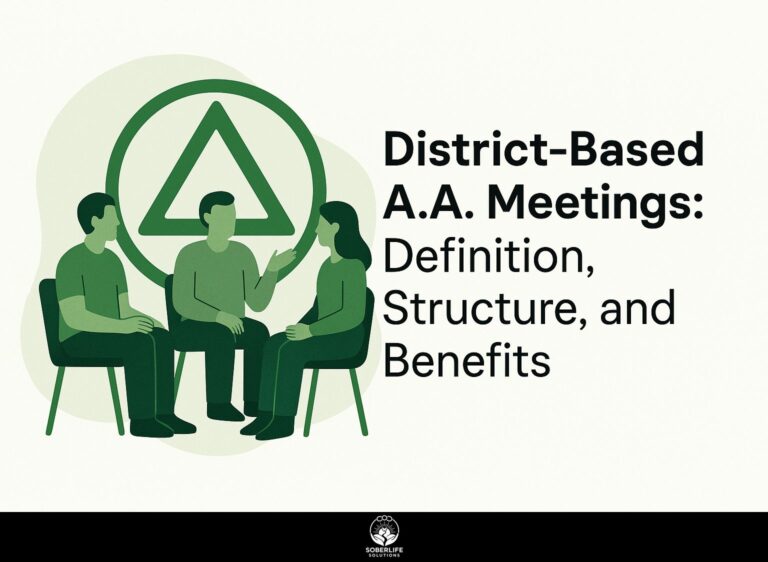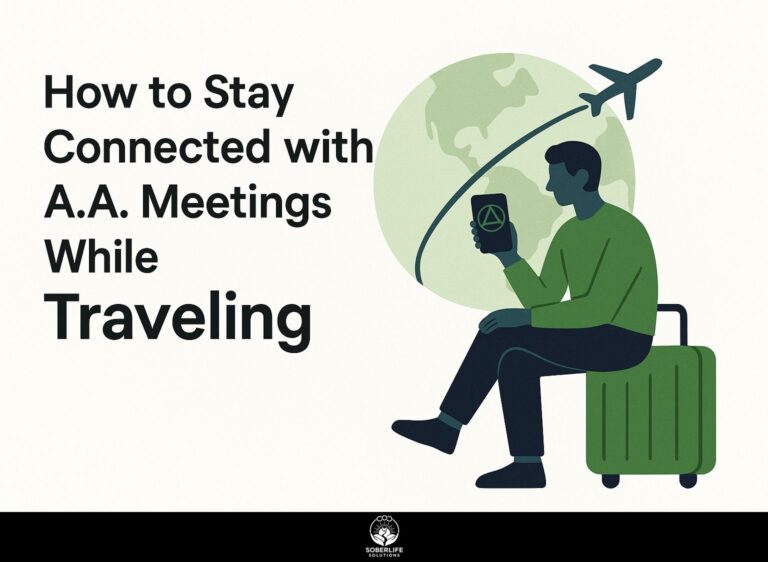How to Use Email for A.A. Groups? A Step-by-Step Guide
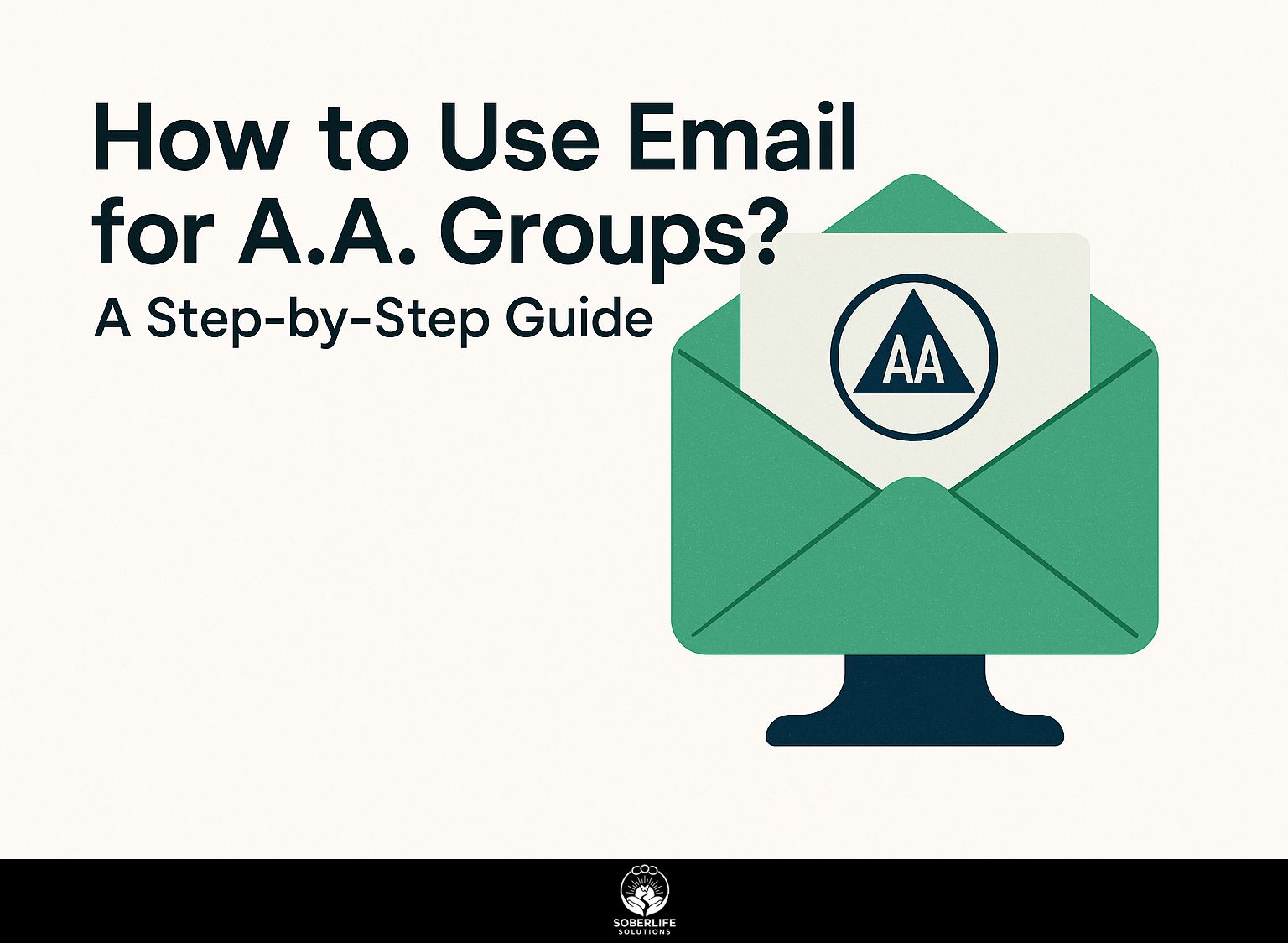
Email is a powerful tool for Alcoholics Anonymous (AA) groups, especially for those participating in meetings online. In this step-by-step guide, we’ll look at how Lamp-lighters and other AA members can use email to improve communication, share news, and connect with other members. By using email effectively, you can improve communication and keep everyone updated about upcoming AA meetings and events. Let’s improve how your group communicates!
Key Takeaways:
Importance of Communication
Regular email communication keeps members connected, which is essential for the support system in online AA meetings.
Regular conversations improve group interactions by building a feeling of belonging and trust among members. For instance, sharing personal experiences or updates creates opportunities for empathy and encouragement. This aligns with insights from the University of Waterloo, where teamwork skills are considered vital for effective group dynamics.
Tools like Mailchimp help make these communications easier by allowing organizers to send frequent newsletters or meeting notices, ensuring everyone stays involved.
Getting people to respond or discuss common interests can increase involvement, as members feel appreciated and are more likely to take part in the group.
Setting Up an Email Account
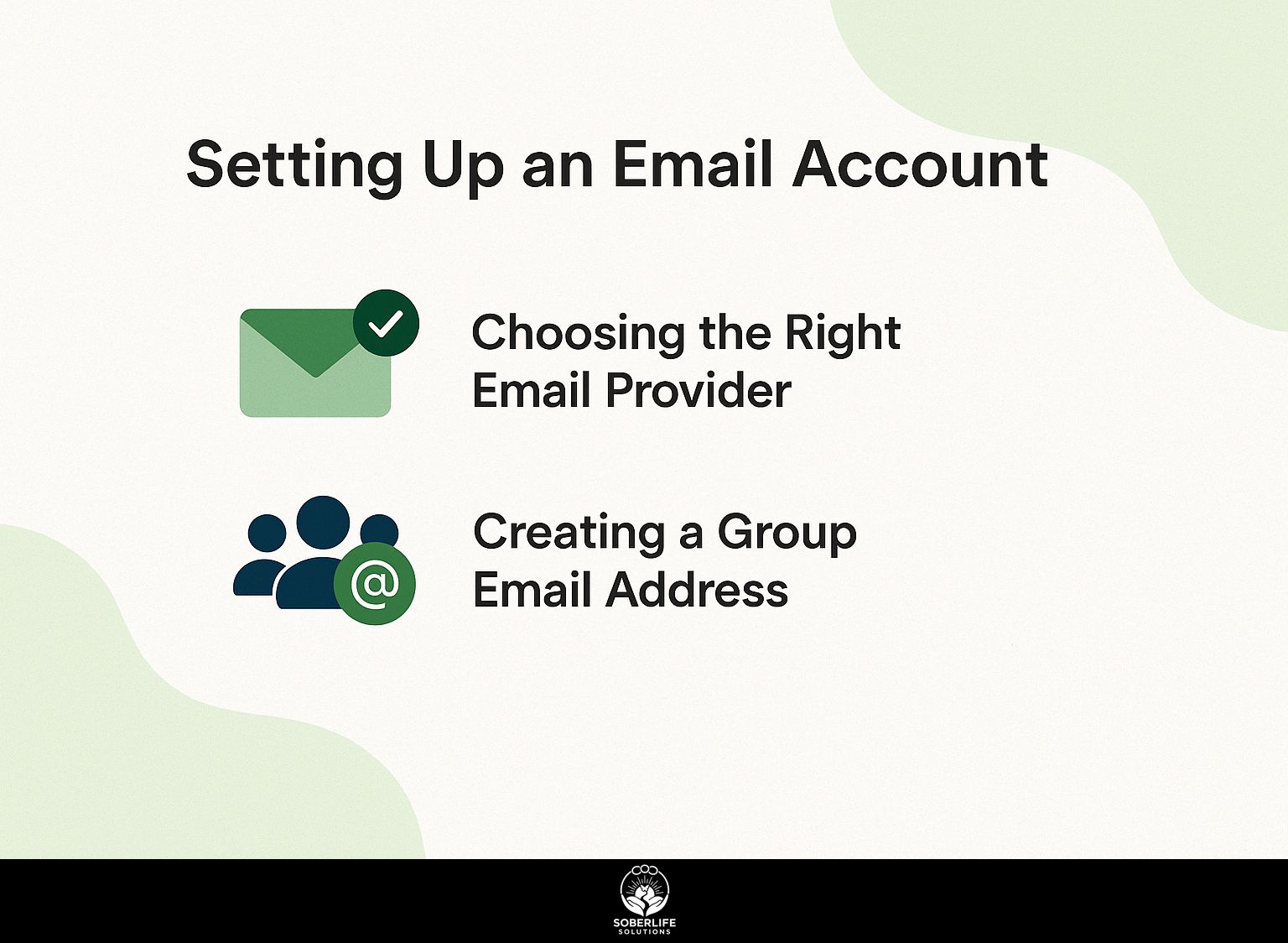
Picking the right email provider is important for A.A. groups because it affects how well they can communicate and keep member information safe.
Choosing the Right Email Provider
Popular email services such as Gmail (free) and Outlook (free/premium) provide strong features that work well for A.A. group needs, allowing dependable communication.
Both platforms emphasize user-friendly design and essential features like group mailing and calendar integration.
Gmail’s simple design allows for easy management of multiple conversations, and its strong search feature helps find old messages quickly. Outlook offers a better calendar experience by simplifying the process of scheduling meetings and events.
To improve privacy, Gmail lets users control app permissions and how data is used.
Assess your group’s needs: choose Gmail for simplicity and ease, or opt for Outlook if advanced scheduling features are a priority.
Creating a Group Email Address
Creating a shared email address (e.g., [email protected]) makes it simple for all members to connect and contact one another.
To set up this email effectively, follow these steps:
- Choose a provider like Gmail for its user-friendly interface.
- Go to the sign-up page and select ‘Create account.’
- Fill in your group details, ensuring you choose a relevant name for easy recognition.
- Verify the account through the confirmation email you receive.
Consider setting up email aliases for committee members, which allows them to receive group emails without sharing personal addresses, enhancing privacy and professional communication.
Building Your Email List
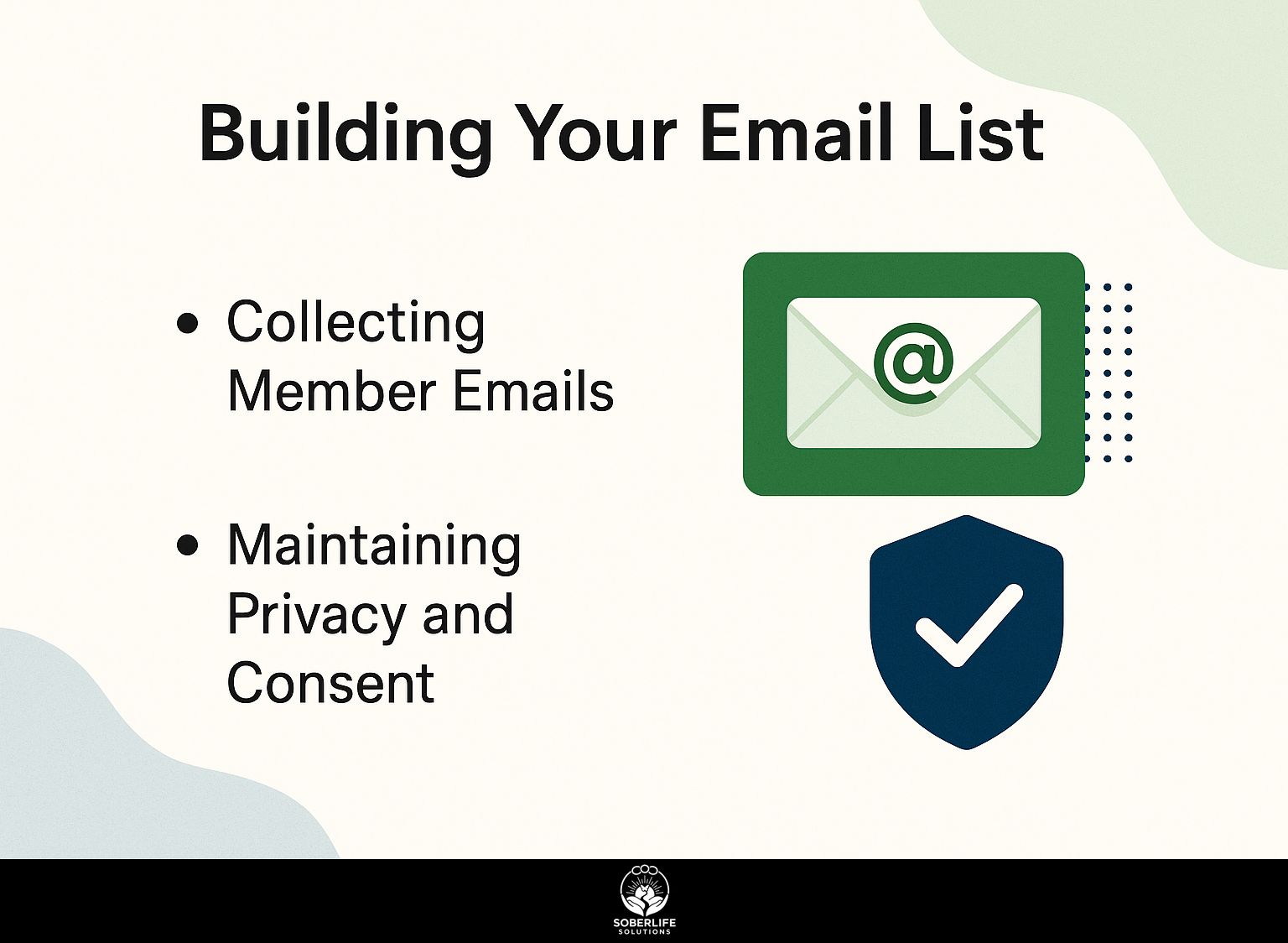
Creating a strong email list is important for A.A. groups to make sure all members get important updates and information clearly.
Collecting Member Emails
Utilizing sign-up sheets during meetings and online forms can significantly simplify the process of collecting member emails for your A.A. group.
To effectively gather emails, consider these approaches:
- Use Google Forms to create an engaging online survey that members can fill out from their devices.
- At each meeting, pass around a physical sign-up sheet where attendees can jot down their emails.
- Ask people to join in the discussions and suggest they give their contact details to receive news about upcoming meetings or events.
These methods have shown to work well, enabling groups to grow their contact lists a lot, which often leads to improved communication and member outreach.
Maintaining Privacy and Consent
A.A. groups must prioritize privacy and consent when collecting emails, ensuring that all members are aware of how their information will be used.
To maintain privacy, A.A. groups should implement specific practices. Start by using BCC for group emails to shield recipients’ addresses from one another.
It’s also essential to provide clear information about how members’ data will be used, ideally through a short privacy policy. Regularly updating these consent practices is important, especially in light of regulations like the GDPR, which mandates that members have control over their personal information. For those interested in a comprehensive overview, this analysis by the European Union covers the full spectrum of implications.
This proactive approach helps build trust and complies with legal standards.
Crafting Effective Emails
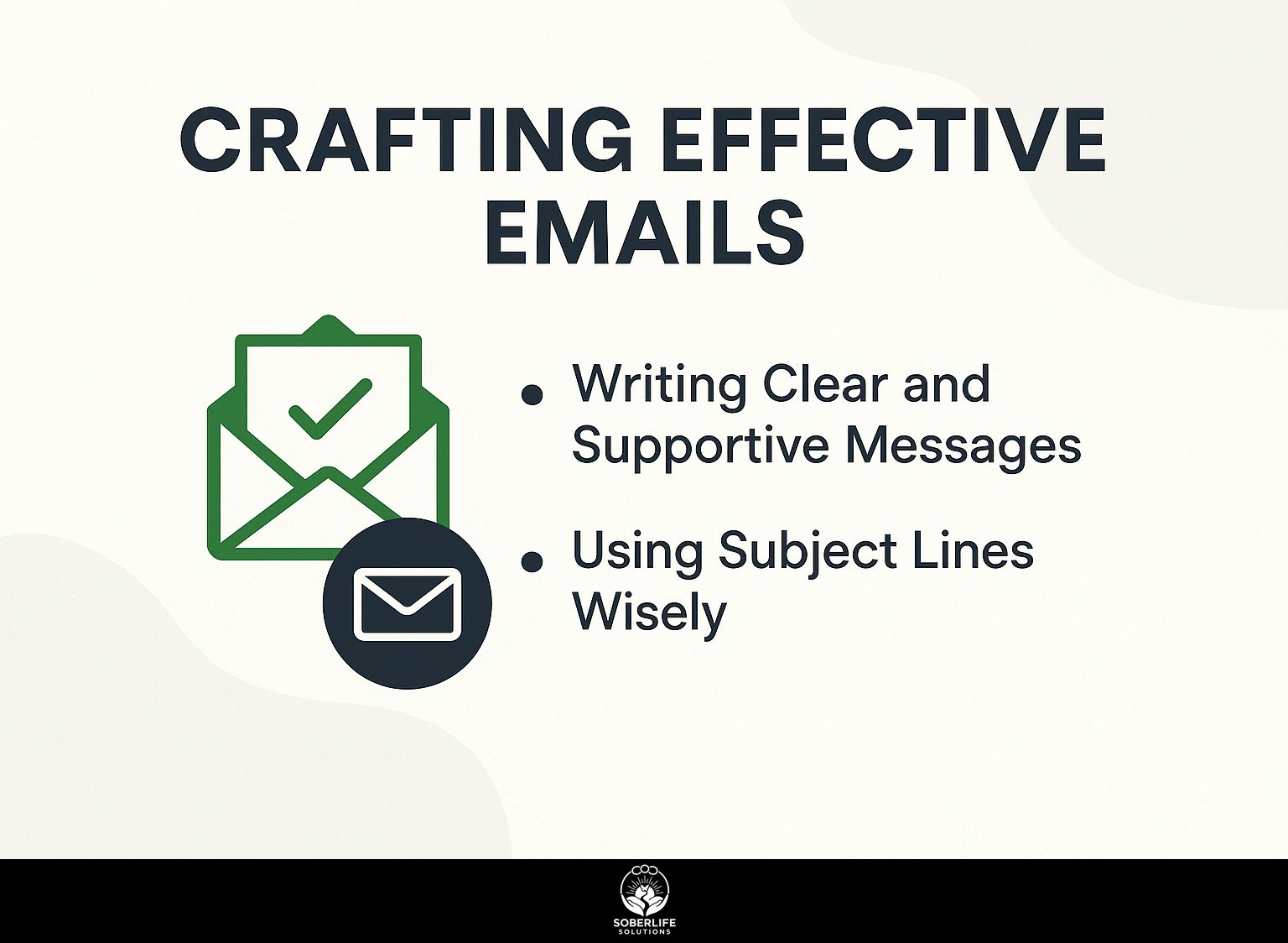
Writing clear and helpful emails is important for A.A. groups to share key information and keep a feeling of togetherness among members.
Writing Clear and Supportive Messages
To create clear and helpful messages, A.A. groups should use direct language and a caring tone in their communications.
To improve clarity and connection, A.A. groups can use various methods. First, maintain consistent subject lines that reflect the email’s intent, such as ‘Weekly Support Meeting Reminder.’
- Next, consider using bullet points to highlight key information, like meeting time, location, and any materials needed.
- Adding a short personal message, such as an uplifting quote, can help build a feeling of togetherness.
For example, a well-written email could be: ‘Hello everyone, just a reminder about our meeting this Thursday at 7 PM.’ Remember, ‘It’s not about setbacks, but about how you recover.’ Looking forward to seeing you all!
This approach creates a warm and inviting atmosphere.
Using Subject Lines Wisely
Writing clear subject lines can encourage A.A. members to open emails, which makes the messages more impactful.
To maximize engagement, keep subject lines concise and directly relevant, ideally under 50 characters.
Use action words like ‘Join us’ or ‘Reminder’ to encourage quick responses. Personalizing subject lines, such as including the member’s first name, can increase open rates by up to 26%.
Try A/B testing with different formats; for example, compare simple invitations to inviting questions. These methods can identify what works well with your audience, improving how you communicate. Several email marketing insights by Twilio highlight the effectiveness of A/B testing in refining communication strategies.
Sending Regular Updates
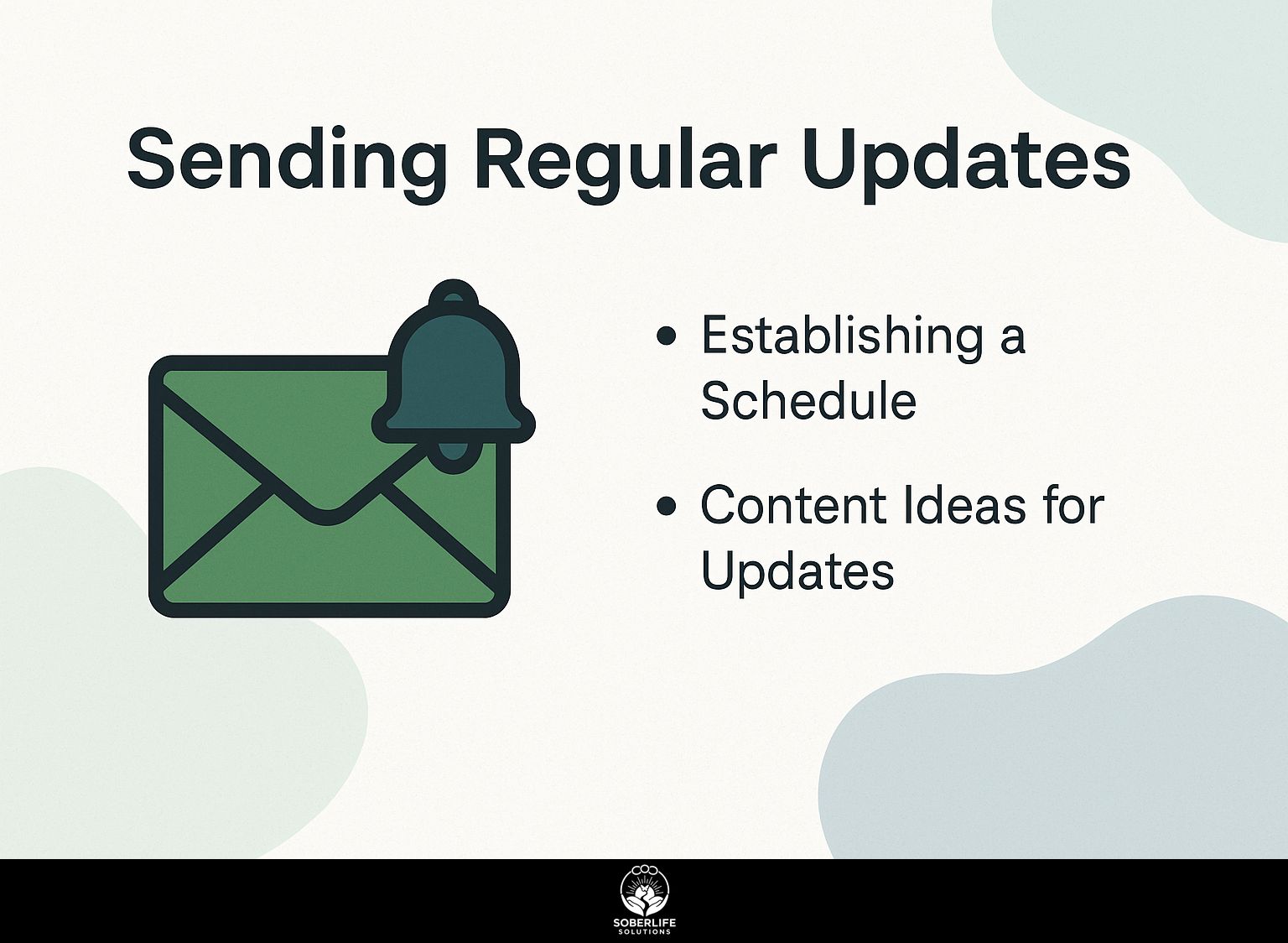
Setting up a regular plan for email updates keeps A.A. members informed and involved, creating a consistent communication pattern.
Establishing a Schedule
Sending an email every Thursday gives members regular updates without flooding their inboxes.
To implement this effectively, first identify your target audience’s preferred frequency. Aim for engaging content that aligns with their needs, such as summaries of recent developments or upcoming events.
- Then, choose specific times for sending-early morning often yields higher open rates.
- Plan and finish your emails early by setting alerts in your calendar.
Tools like Mailchimp can be very helpful. They let you schedule emails ahead of time, track how people interact with them, and change your approach as needed.
Content Ideas for Updates
Ideas for regular email updates might cover meeting alerts, celebrating members’ achievements, and offering recovery resources to make communication engaging and diverse.
To make your email updates more engaging, consider these specific content ideas:
- Upcoming meeting dates to keep members informed, like “Join us for our monthly meeting on March 15 at 6 PM.”
- Inspirational quotes related to personal growth, such as, “Success is not final; failure is not fatal: It is the courage to continue that counts. – Winston Churchill.”
- Member spotlights showcasing individual successes, like, “This month, we celebrate Jane Doe’s 6 months of sobriety!”
- Resources that are useful, like links to informative articles or nearby support groups.
- Group conscience discussions to encourage member involvement, for instance, “This month, we will discuss our outreach efforts-bring your ideas!”
These methods make sure that every update gets to your audience successfully.
Engaging Members Through Email
Encourage member interaction via email by asking for opinions and promoting involvement in conversations and activities.
Encouraging Feedback and Participation
To encourage feedback and participation, A.A. groups can include questions in their emails and provide clear calls to action for members to respond.
For instance, asking questions like, “What topics do you want to see in our next meeting?” or “How can we better support your recovery?” invites thoughtful responses.
Pair these inquiries with easy reply options, such as simple ‘Yes’ or ‘No’ buttons in emails or links to a survey form.
Acknowledge feedback in upcoming messages to demonstrate to members that their opinions are important, helping to create a tighter community. This method increases participation and adjusts the group’s activities to suit what members need.
Using Email for Events and Announcements
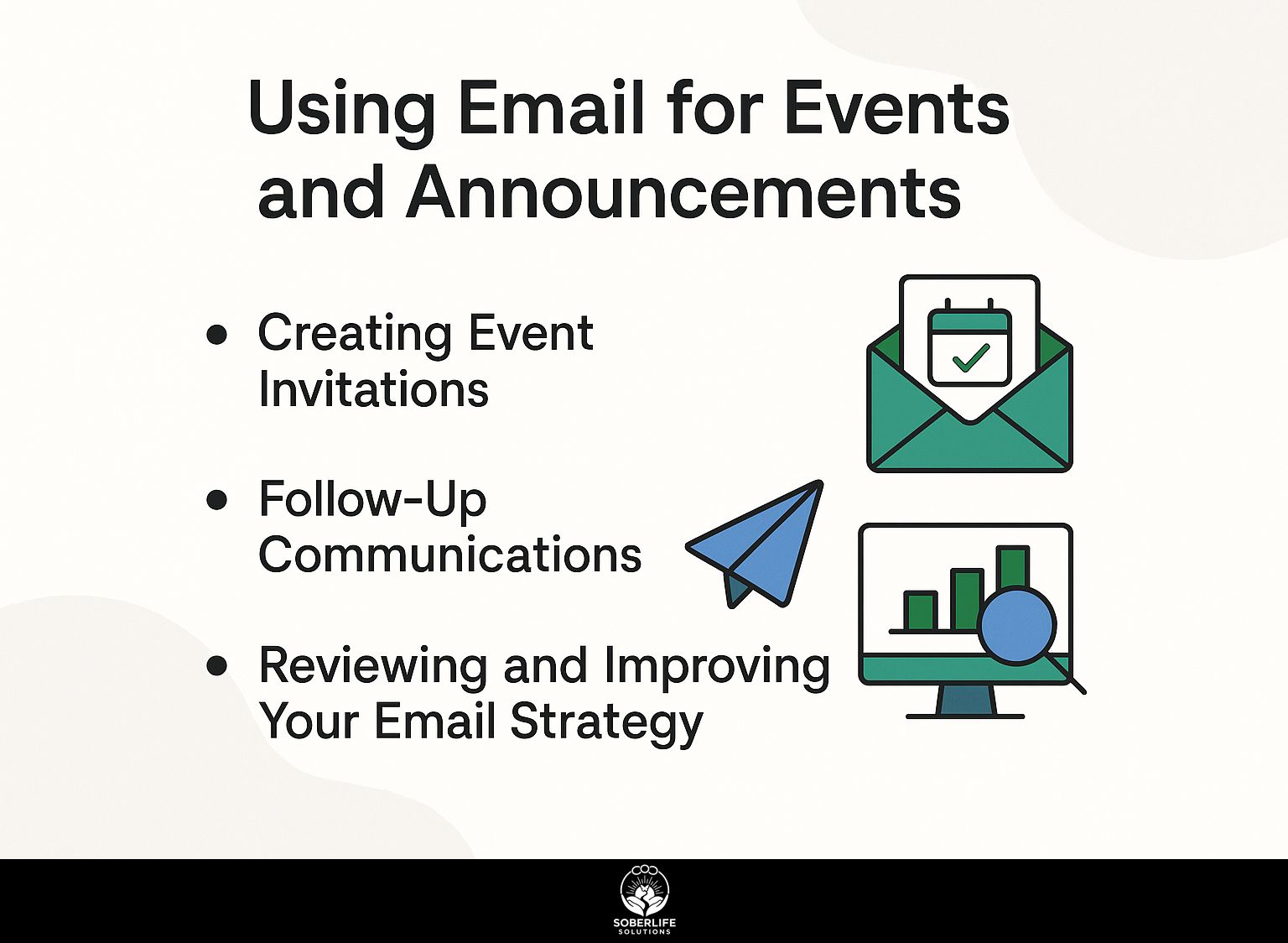
Emails are great for announcing events and sending invitations, helping A.A. groups to organize and inform members clearly.
Creating Event Invitations
Simple and engaging event invitations can improve member attendance and involvement, helping in organizing A.A. meetings.
To structure your invitations effectively, begin with a captivating subject line that includes the event’s name. Follow this with essential details: specify the date, time, and location clearly. Next, give clear RSVP instructions so that attendees can easily confirm if they will join. Include a brief context about the event, such as its purpose or activities planned.
Template:
- Subject: Join Us for Our A.A. Meeting
- Date: Saturday, April 15, 2023
- Time: 10:00 AM
- Location: Community Center Room 3
- RSVP: Reply by April 10 to confirm attendance.
Join us for support and fellowship!
Follow-Up Communications
Sending messages after events builds member connections and provides summary information that encourages participation in later events.
To create a successful follow-up, begin by thanking attendees for coming, which helps build goodwill. Next, share highlights or photos from the event to evoke positive memories and encourage engagement.
Include links to relevant resources or upcoming meetings to maintain momentum. For example, a follow-up email might read: ‘Thank you for joining us at last week’s workshop! Attached are some photos and key takeaways. Don’t forget our next meeting on April 15-click here for details!’
This method builds community connections and gets members ready for upcoming activities.
Reviewing and Improving Your Email Strategy
Regularly reviewing your email strategy, based on member feedback and engagement metrics, can lead to continuous improvement in communication efforts.
To effectively evaluate your email campaigns, consider implementing these strategies:
- Use tools like Mailchimp or Campaign Monitor to track open and click-through rates, which show how engaged your audience is.
- Use Google Forms or SurveyMonkey to regularly ask for feedback on which content your audience likes.
- Adjust your email frequency and topic based on this data, allowing you to tailor your strategy to match member preferences while improving overall satisfaction.
Frequently Asked Questions
How can I set up an email account for my A.A. group?
To set up an email account for your A.A. group, you can use any free email service such as Gmail, Yahoo, or Outlook. Simply go to the website of your chosen email service and follow the instructions to create a new account. Be sure to choose a professional email address that reflects the name of your A.A. group.
How do I add members to my A.A. group email list?
To add members to your A.A. group email list, you can simply ask for their email addresses and manually add them to your contact list. You can also create a Google Group or use an email marketing service to manage your group email list and easily add or remove members as needed.
Can I send group emails using my personal email account?
It is not recommended to use your personal email account to send emails to your A.A. group. This can cause confusion and may lead to privacy concerns. It’s a good idea to set up a different email account just for your A.A. group to keep messages flowing smoothly and protect your members’ privacy.
What should I include in my A.A. group email signature?
Your A.A. group email signature should include the name of your group, meeting schedule, website or social media links, and a brief statement about the purpose of your group. You can also include a disclaimer to remind recipients to maintain the anonymity of others when sharing information from the email.
How often should I send out emails to my A.A. group?
The frequency of your group emails will depend on the needs and preferences of your members. It is recommended to send out a monthly newsletter with updates, announcements, and any relevant information. You can also send out additional emails as needed for urgent matters.
How can I keep my A.A. group emails private?
To keep your A.A. group emails private, use blind carbon copy (BCC) when emailing several people at once. This will stop anyone on the email list from seeing other people’s email addresses. It is also important to remind your members to maintain confidentiality when sharing information from the group emails.

